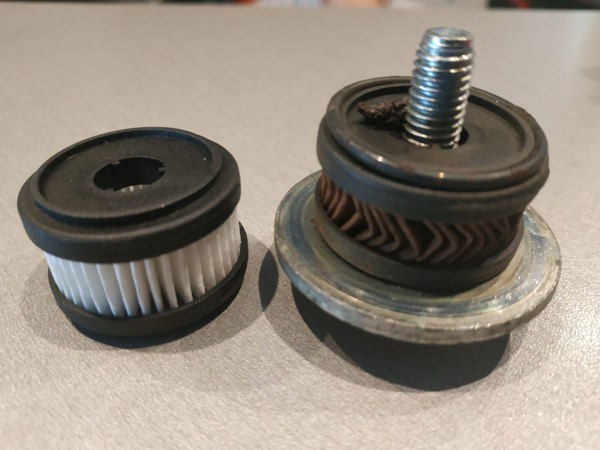The more and more popular gas installations in passenger cars mean that more and more drivers are looking for information on the functioning of the installation. That is why we decided to create an article on the topic of filters used in gas installations. So many drivers forget about the correct operation of the installation that it shortens its service life and affects the condition of the car in which it is installed.

What aregas filtersused for?
Gas installations have two filters that cannot be found in other vehicles. The liquid phase filter and the volatile phase filter mean that the fuel is properly filtered from mechanical impurities such as swarf or oil. It is worth taking care of proper fuel cleaning which translates directly into the life of the power unit. It is advisable to observe the appropriate replacement dates recommended by the manufacturers as well as check the level of their use from time to time, because depending on the type of installation and the type of engine, wear at the same mileage may be different.The liquid phase filter is installed between the evaporator and the gas tank, while the volatile phase filter is installed between the reducer and the washers.
Liquid phase filter
The filter is responsible for cleaning the fuel in the liquid phase, usually made of plastic or metal. In its center we find corrugated paper being a filtering material, which is most often saturated with various types of resins. Depending on the manufacturer, the filters have different height, outer diameter and inner diameter. Cartridges with sealing O-rings or complete filters that do not have replaceable elements are most often sold. In online stores you can find original filters as well as replacements of well-known producers.
Volatile phase filter
The volatile phase filter is designed to clean the fuel before it goes to the injectors controlled by an electronic controller. Filters are available both as an inseparable element made of metal, which does not have replaceable elements, and its replacement requires the purchase of a complete filter. Another type of filters are detachable filters, in which the filter insert is replaced and the housing is made of plastic, it remains a permanent element. Depending on the type of installation you have in your car, the manufacturer recommends a specific type of filter as well as its exact size.
What should I change the gas filter?
It is difficult to answer this question clearly. Each of the manufacturers sets the number of kilometers that can be driven by car with gas installation. Most often, filters equipped with a cellulose filter are changed every 15,000 kilometers. Those with a polyester insert with a net will allow us to drive 25,000 kilometers. Fiberglass filters with a durability of 35,000 kilometers turn out to be the most durable. It is worth remembering, however, that each time you visit a workshop, it is worth asking to check the condition of the filters, because depending on the installation, they can be used up faster.

Replacing the filter in a workshop or at home garage
Inexperienced home-grown mechanics do not recommend changing the filters on their own, although this is not due to the difficulty of this task, but it's about safety. We recommend novice car users equipped with installations to use the services of professional car mechanics specializing in gas installations. The price of the service is not too high and does not significantly affect the price of e.g. periodic inspection of the installation. Depending on the price of the filters, a review and replacement costs about 100-150 PLN in a professional workshop.
What does filter replacement look like?
The first thing to start with when replacing the filter is to turn off the gas supply from the cylinder. Start the car and wait for it to switch from petrol to LPG. The certainty that the remaining gas is burned out, when the engine speed drops, and at some point the installation switches back to gasoline itself. We can then turn off the engine and proceed to replace the filters. Of course, you should ensure that you choose products recommended by the manufacturer or replacements selected in proven stores. It will save us problems with a mismatched hole or too big or small O-ring. For filters, we only need a basic set of wrenches and a screwdriver, you do not need to have special accessories. Replace non-dismantling filters in full, in the case of replacing only the insert, care should be taken to clean the housing and other elements from metal chips. You can use a home vacuum cleaner.
Summary
By regularly changing filters, you not only care about the performance of your car, but also about the condition of the power unit. It is worth remembering to replace them after covering the appropriate number of kilometers specified in the installation manufacturer's specifications. It is also worth taking advantage of the filter exchange offer for both the liquid and solid phases for each inspection. This is a relatively low cost, and it will guarantee you greater travel safety and longer life for both the installation and the engine.
Wide road!
